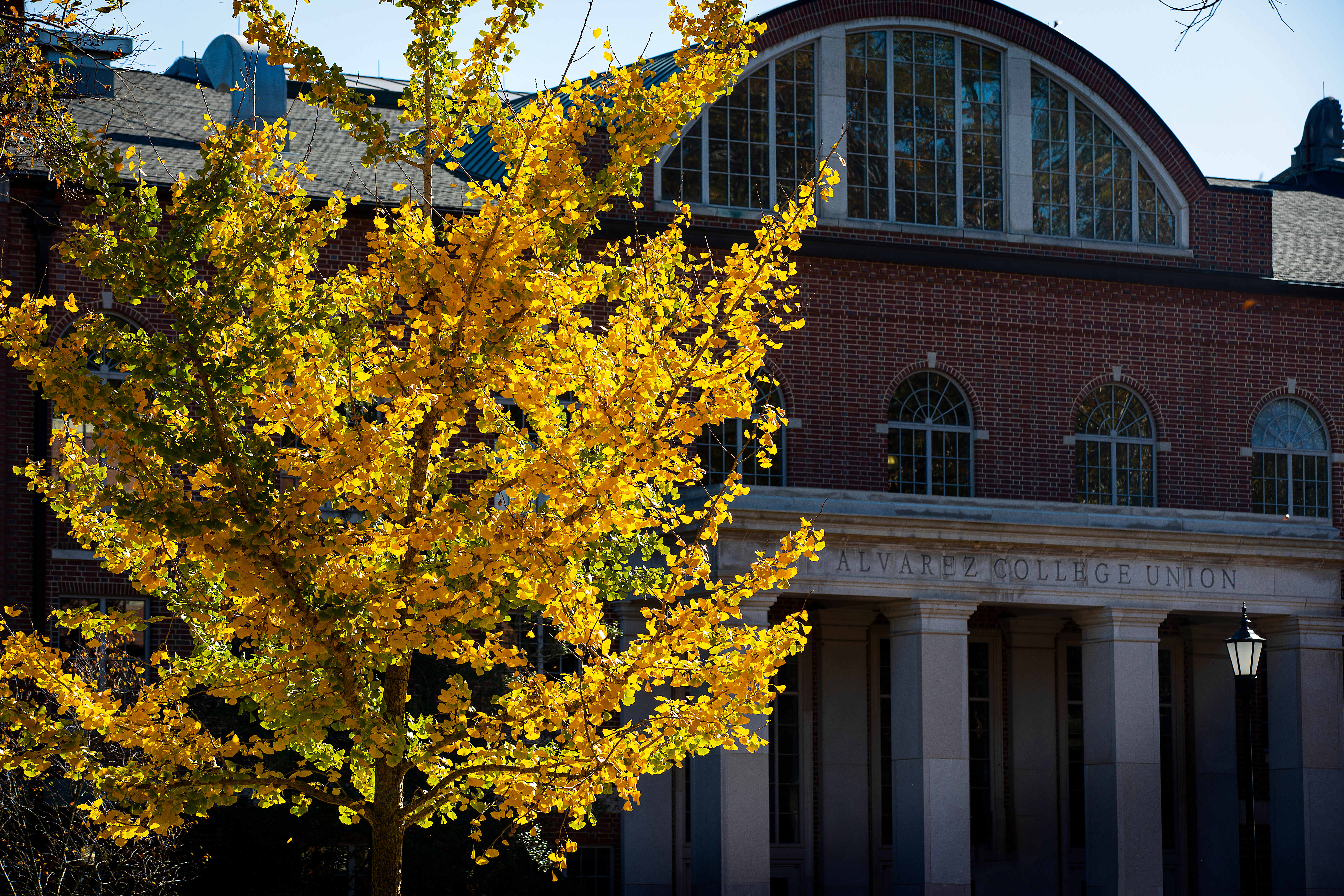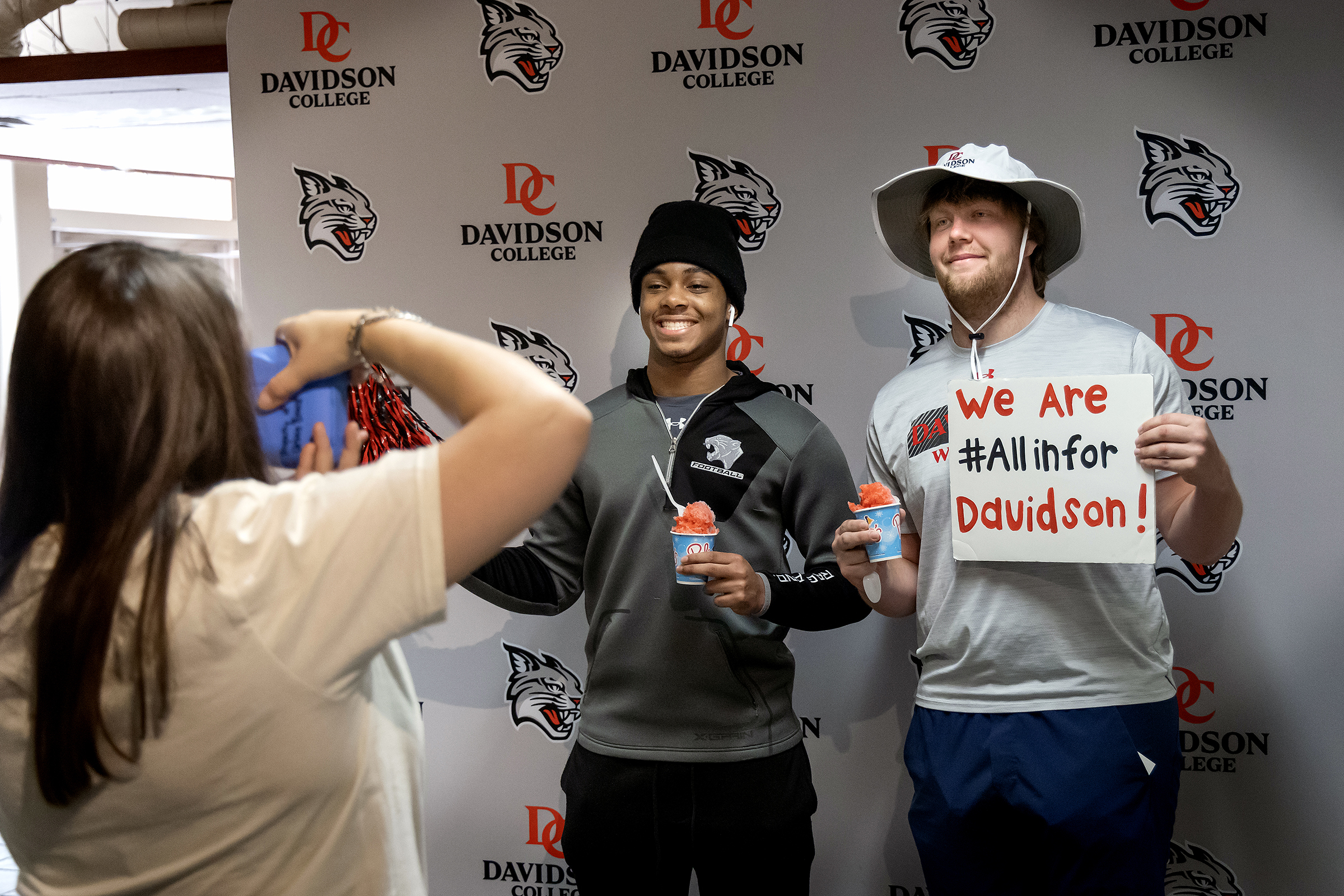Math Majors Build Structures With ‘Tensegrity’
December 20, 2016
The three senior math majors in Professor Donna Molinek's independent study would exclaim "Tensegrity is a lie!" when the rods and cords they used to create structures based on mathematical models refused to bend to their will. But tensegrity is indeed true, and can be found everywhere–in the natural world and man-made structures.
The renowned architect Buckminster Fuller coined the term "tensegrity" in the 1960s as a combination of the words "tension" and "integrity." It applies in the real-world to objects that meet certain architectural standards. It can be built into domes and bridges, and occurs naturally in the human body and even within the body's cells.
The three students–Ashley Finke, Audrey Moore and Santiago Navia–hadn't heard of tensegrity prior to the seminar. But they understood the math involved, which was a mix of linear algebra and physics, with some calculus three and geometry thrown in.
Tensegrity involves rods connected and suspended in space by tightly stretched cords. But none of the rods touch each other, nor do the lengths of cord touch, except where two or more are tied to holes drilled in the end of the rods.
Examples of tensegrity in the physical world include the Georgia Dome, The Kurilpa Bridge in Australia and–curiously enough–much of the superstructure of the human body.
"Our bones don't touch each other, but are held in place by our tendons," Moore said.
Tensegrity-based objects look fragile, but are remarkably light and strong. The students tested out their models by tossing them back and forth.
Proof of Concept
Molinek's students studied the mathematical concepts throughout the semester, and researched other math-based structures, such as geodesic domes, ruled surfaces and platonic solids. Their proof of concept final project was to create tensegrity-based objects of their own.
Over the course of several weeks, they modeled and built two structures out of rods of bamboo and cord. They were easy enough to create in the "Sketchup" computer modeling program, but their assemblies didn't always fit as precisely as the models predicted. Those were the moments for exclamations of "Tensegrity is a lie!"
Davidson community resident Patrick Mays, who provided guidance based on his many years of experience in engineering and architecture, was a major asset to the team.
While working on the design for their structures, the team also sought out suitable places to more or less permanently employ their finished product.
One piece was purchased by Davidson Outdoors to use as an element in the challenge course. The other, larger piece now stands sentinel in the middle of the Community Garden as an archway between rows of plants. It is tall enough for a six-foot person to pass through without bending, and wide enough for a wheelbarrow. The students hope vegetable vines will cover it during the growing season.
In the end, the course proved more fun than frustrating, and Molinek was extremely impressed with her students.
"This was by far my favorite one. Most of our courses are theoretical, but in this class we used theory to create something tangible," Finke said. "It was fun to put math into art!"
Bill Giduz
bigiduz@davidson.edu
704-894-2244



